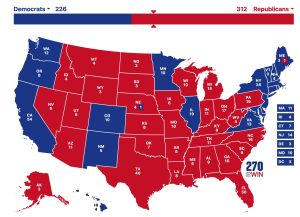Wake Forest Must Rectify Racist History
Wake Forest must commit to the remediation of past endorsement of racism
February 4, 2021
The Old Gold & Black’s September 3, 2020 article exploring Wake Forest’s history of racism makes explicit both the university’s success in recruiting and graduating racist students and its propensity for embracing and celebrating a racist campus culture. What has resulted from the university’s failure to combat racism on its campus is not only a stain on its history; it illustrates the extent to which the university actively contributed to reproducing racist institutions. The injustices perpetrated by the university and its student body require greater reparative actions than are presently being undertaken. President-Select Susan Wente should commit to broadly expanding the university’s social justice involvement.
The university’s restorative and reparative obligation is remarkable because throughout the twentieth century it funneled countless racists into the working world. The students portrayed in photos published in the Howler wearing blackface and performing minstrel shows graduated into the labor force; they took up law, ran for public office, taught at universities, began medical practices and worked for powerful financial institutions. From these positions their ideological perversions are not just shameful – they are disgustingly influential.
The attorney S.J. Bennett is one such example. Bennett completed his studies in law at Wake Forest College in 1912, where he was elected as president of his class. One month after his graduation, Bennett introduced to the Winston Board of Aldermen a proposal to segregate the neighborhood of East Winston, arguing that “the negroes who are buying property and moving to the Eastern part of the city are damaging the property of the citizens of that part of the city.” After brief consideration the Aldermen passed Bennett’s ordinance and soon expanded it to encompass the entire town of Winston. The 1912 segregation ordinance was deemed unconstitutional two years after its passage.
However it prefigured later efforts to segregate Winston-Salem throughout the 1930s and 40s. Bennett’s example illustrates how Wake Forest and its alumni have contributed to the institutions and ideologies that structured the racial and economic geography of Winston-Salem. My argument is not that the university graduated a single “bad apple” and is responsible for rectifying his behavior; what makes the university’s responsibility for reparation so grand is that it systematically empowered people such as Bennett for decades, as exemplified by the century’s worth of racist photographs preserved by the Howler.
So far as I can tell, the university’s commitment to social justice — at least its student-catered agenda — consists of a retreat, a civil rights tour, a biannual seminar, a social justice incubator, a theme house and a book club. It has also undertaken efforts to examine its historic beneficence from slavery and commissioned a report concerning policy objectives for expanding diversity and inclusion on its campus. However, these programs strike me as insufficient, possibly even obfuscatory of the university’s moral obligation to address damages done. Its responsibility for bestowing degrees to cohorts of unrepentant racists — degrees which legitimized the views of those recipients and enabled their implementations by powerful institutions is a wrongdoing that requires proportionate redress.
Assuming the attendees of the many blackface and “jungle” themed fraternity parties documented by the Howler left this university under the impression that their ideological persuasions were acceptable, it seems safe to assume that Wake Forest University, throughout the twentieth century, saw to the cultivation and professionalization of a multigenerational crop of well-equipped and highly stationed bigots. The downstream effects of this failed matriculation are unquantifiably alarming and clearly oblige a suite of reparative measures by the university.
Expanded investment in Winston-Salem/Forsyth County public schools, the implementation of policies to reduce the pernicious effects of the university’s city-wide expansions, the amelioration of the damages already done by such expansions (such as to the neighborhoods it has razed and gentrified) and the initiation of substantive partnerships with both local nonprofits and local government agencies could be steps in the right direction. It should be of utmost importance to Dr. Wente that throughout her tenure these steps are taken.












Hank • Feb 5, 2021 at 2:14 am
A Wake Forest Boomer Responds
Poetry did nothing to
Keep my gentle face
From mouldering to
The sharper view
Of Pound’s at St. Elizabeths—
To see the young remark
My role: “Geezer, nothing else.
Out of our way! You paltry crank
With one foot in the grave!
What can you do to make the world
A place we can progress—and
Growing old ourselves be first
To finally get it right?
Speak! before your grave
To us, your day is growing short!
Speak! before your grave at dusk
Your fusty crumb of truth!
Speak! as history buries you–
This your final chance!”
“Well, my young, this may surprise:
You’ve quoted me exact
What to the old I said myself
Declaiming count by count.
But eternals what they are
A half a century later
I stand before my grave
Like them,
In humble resignation.